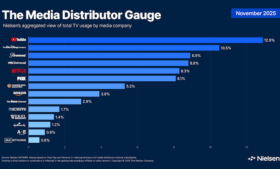
 Before most legacy outlets had started thinking seriously about YouTube, Rachel Stockman, President of Law&Crime, was employing a truly YouTube-first strategy, shaping its content from the ground up – with distribution as the priority, not the afterthought. Stockman shares her thoughts on leveraging the platform.
Before most legacy outlets had started thinking seriously about YouTube, Rachel Stockman, President of Law&Crime, was employing a truly YouTube-first strategy, shaping its content from the ground up – with distribution as the priority, not the afterthought. Stockman shares her thoughts on leveraging the platform. A YouTube-first strategy requires full commitment and the willingness to experiment, pivot, and even take a loss at first when necessary. The platform’s greatest strength is the immediate audience feedback and robust analytics, which provide an unmatched ability to adapt in real time. It gives you the liberty to test ideas before going all in on bigger productions. It is important to note, however, that YouTube is saturated because the barrier to entry is low–anyone has the ability to post. It takes long-term commitment and a true obsession with the platform to make it work. The challenge is not to get lost in every single data point; success comes from balancing analytics with creativity, consistency, and strong production value. A key part of that symbiosis is building a team like we have at Law&Crime, made up of incredibly committed writers, editors, producers, reporters, and hosts who understand what works natively on YouTube. We’ve leaned into what makes us unique, taken risks, and created a style and voice that feels authentic to viewers.
At the core, it always comes back to great content. Credibility, authenticity, and compelling talent are what set successful YouTube shows and podcasts apart. In the true crime and legal space, our strength is being both first and the most thorough when big stories break. We don’t just chase headlines; we tap into real experts, add crucial context, exclusive footage, and provide reporting that is as authoritative as it is engaging. We also lean into our hyper-engaged audience and turn to them through Q&As and polls to help steer our shows.
Technology has opened entirely new storytelling possibilities for us. For example, recently, while covering the P. Diddy case where federal courts don’t allow cameras, we recreated courtroom proceedings directly from transcripts using AI so our viewers could literally watch for themselves what was unraveling. Our audience’s response was overwhelmingly positive. Many commented, “This is exactly how A.I. should be used,” and the episodes garnered millions of views. It was a clear example of innovation meeting a real gap in access. For us, AI is a powerful way to bring audiences closer to the truth when traditional access is limited, while still maintaining accuracy and credibility. As these technologies evolve, we are identifying even more opportunities to implement them responsibly, enhancing our viewers’ understanding and engagement without sacrificing the journalistic integrity that defines our work.
One of Law&Crime’s biggest strengths is our unparalleled access to crime and legal stories as they unfold. On any given day, we’re covering 25 or more different legal and criminal cases, which not only builds trust with audiences but also with sources who know we’ll handle their stories responsibly.







